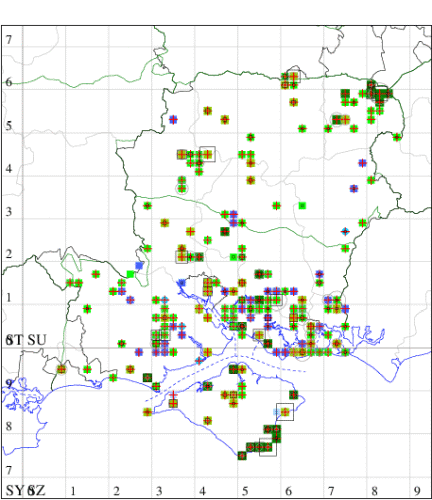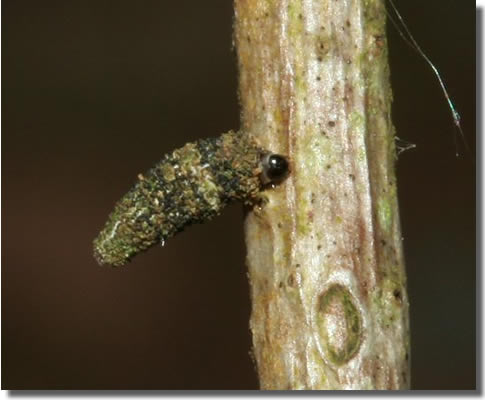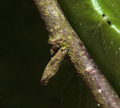Luffia lapidella (=ferchaultella)
Checklist Number11.009 [B&F: 0185]
Verification
Record requires retention of specimen until confirmed, and may require dissection. Consult with CMR if unsure
Common in damp shady places throughout England and Wales, more numerous in the south. Fairly widely distributed across Hampshire and the Isle of Wight. The species previously considered to be common in Britain Luffia ferchaultella has recently been synonymised with L. lapidella (a species previously thought to be confined to Cornwall), and is considered a parthenogenetic form of the present taxon, L. lapidella f. ferchaultella, and while the winged males do occur in Britain, they are very rare (females are wingless); reproduction therefore is generally through parthenogenesis. Larva feeds on lichens growing on tree trunks and fence posts, living within a movable case; larval cases can be found commonly, even abundantly, on tree-trunks, fences and old walls throughout; case length 5-7 mm.


The abundance in each month is indicated as follows:
 No records
No records Very occasional
Very occasional Irregular
Irregular Uncommon
Uncommon Off-peak, but not unusual
Off-peak, but not unusual Off-peak, but not unusual
Off-peak, but not unusual Main flight time
Main flight time| J | F | M | A | M | J | J | A | S | O | N | D | |
|---|---|---|---|---|---|---|---|---|---|---|---|---|
| Adult |  |  |  |  |  |  |  |  |  |  |  |  |
| Larval |  |  |  |  |  |  |  |  |  |  |  |  |





